South Africa was first colonised by the Dutch. When they arrived in the 17th century, several different groups occupied the territory. The Dutch settlers, known as the Boers, took possession of the territory. It was from the Dutch language that Afrikaans was born. This language originated as a Dutch dialect and evolved into Afrikaans in South Africa.
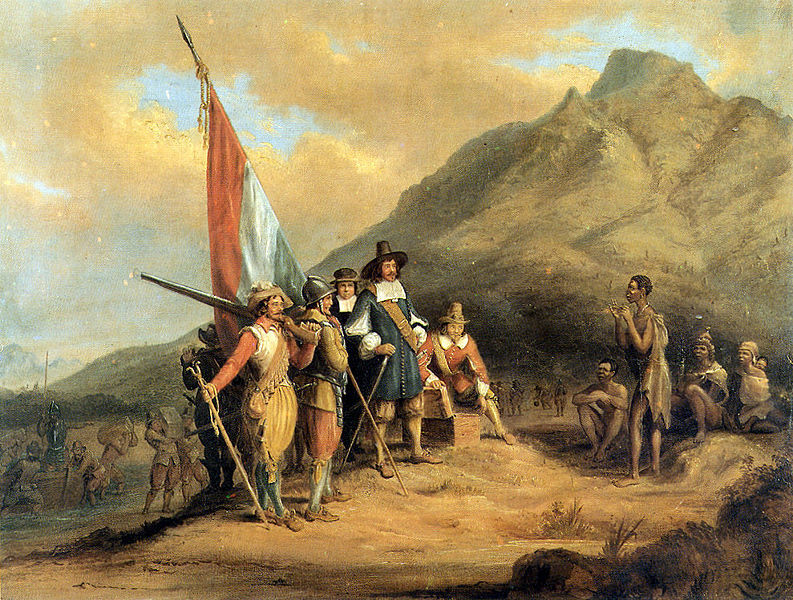
South Africa was then conquered by British colonists, who created a vast territory that became part of the British Empire. The Afrikaners then had to submit to the British after the Boer War.
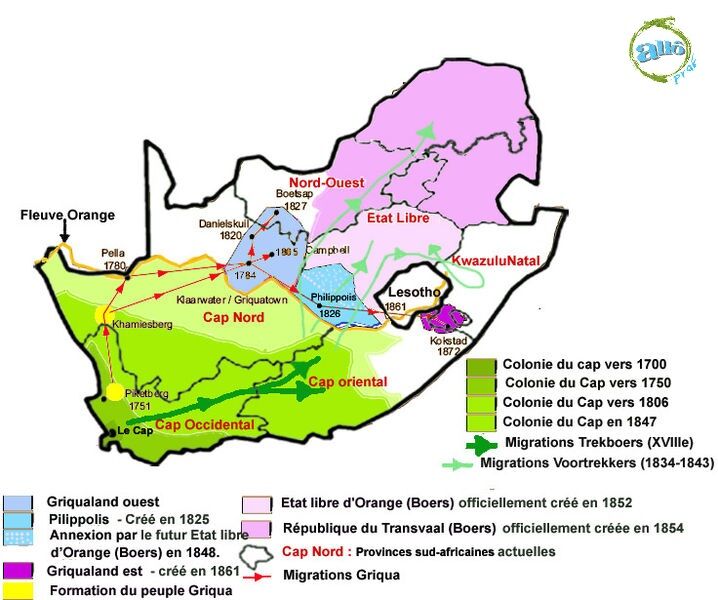
Note: English image coming soon
At the time, the population was mainly made up of black Africans. The whites were divided between the Afrikaners, who formed the majority group among the whites, and the English settlers.
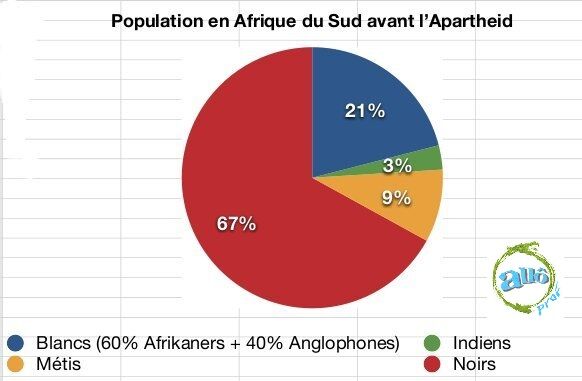
Note: English image coming soon!
In 1910, Blacks and Métis made up more than two-thirds of the total population. The rulers of the British Empire quickly excluded them completely from political life. They even created reserves, special territories for Blacks. Although Blacks made up more than half the population, the territories allocated to them represented only 7% of the total territory. To make their demands heard, the blacks of South Africa created their own political party, which became the African National Congress (ANC) in 1923.
Segregation is defined as measures taken to separate people in society on the basis of their social class or colour. Racial segregation in South Africa began long before the apartheid regime, when South Africa still belonged to the British Empire. The first law, passed in 1911, stipulated that specialised jobs were off-limits to non-whites. In 1913, the Land Ownership Act was added, under which 93% of the land was allocated to the white minority. Language measures were introduced a little later to anglicise Africans and Afrikaners. This measure gave rise to a strong sense of nationalism among Afrikaners.
After the First World War, the Afrikaans language became increasingly established in the territory: in the press, at school, in church, etc. It became sufficiently established for it to become the official language of South Africa. It became sufficiently established to become the official language of South Africa. English was then the second official language. All the other languages spoken by more than 75% of the population were completely forgotten by the administration. No administrative effort was made to save African languages or even to teach them to the communities. The whole system was designed to facilitate the transition to English or Afrikaans. Meanwhile, the British were still in power. They continued their social segregation by imposing a passport that restricted the movement of black people in the territory. It was from this time onwards that blacks could no longer live in the same areas as whites.
Apartheid is an Afrikaans word meaning ‘to live apart’. Apartheid in South Africa was a system of segregation based on a racist policy. Political decisions established laws to separate whites and blacks.
Apartheid began after the 1948 elections, when the Afrikaner National Party took power with Daniel F. Malan at its head. For the first time since British rule, Afrikaners regained power in their former colony.
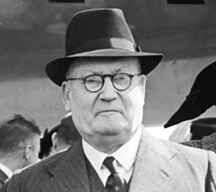
Malan and his party set up a system aimed at concentrating power, mining resources and wealth in the hands of whites. Under apartheid, anyone who was not white was second class. The system was designed to ensure white superiority. From then on, racial segregation became a political and social system, determining all decisions taken by the government.
The government's stated aim in justifying its segregation was that these measures would ensure a distinct identity for the different ethnic groups that populated South Africa. The government achieved this by creating autonomous national units (called homelands or Bantustans). The real aim of the apartheid measures was to preserve white control in a country where whites were in the minority. The apartheid measures are reminiscent of the racial segregation in the United States.
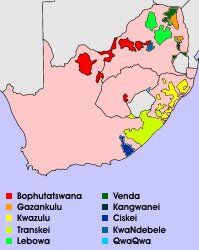
Note: English image coming soon
In 1950, the government set up a racial classification of the population that would serve to distinguish groups and better manage them according to their distinct rights. These three groups were Whites, Métis and Blacks, to which were added Indians (Asians). It was also in 1950 that interracial marriages were banned. The Group Area Act was used to define where people had to live according to the racial group to which they belonged.
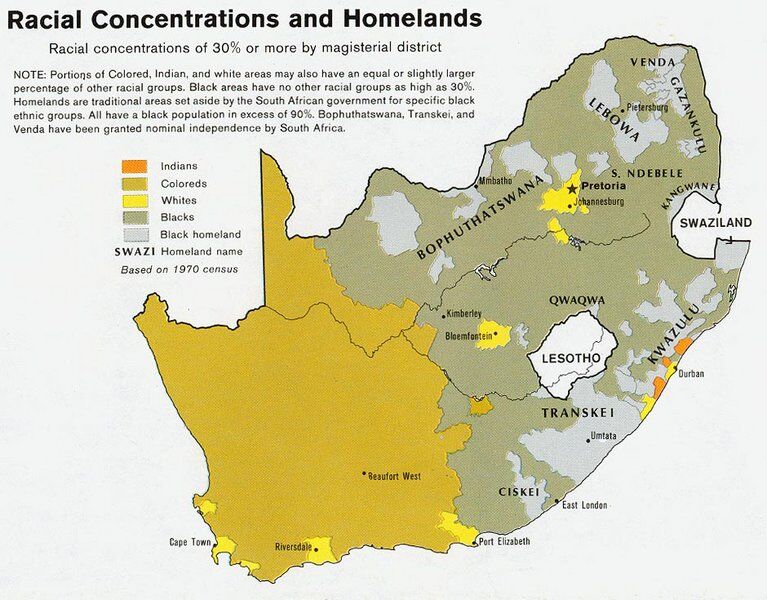
Note: English image coming soon!
Among the consequences of this law, it is estimated that 2.6 million blacks were driven out of the suburbs reserved for whites and sent to the reserves.
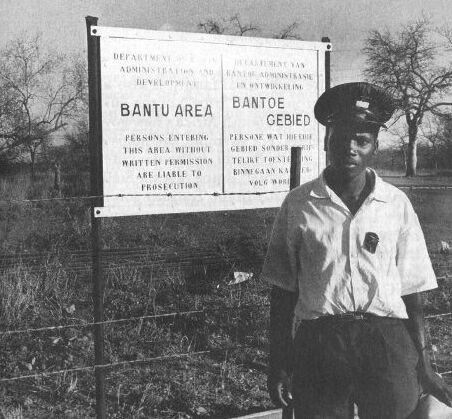
In 1953, the Separate Amenities Act specified how public places were to be separated. Beaches, schools, health clinics, public transport and toilets were all organised and subdivided so that each racial group would have its own public places, to avoid exchanges.
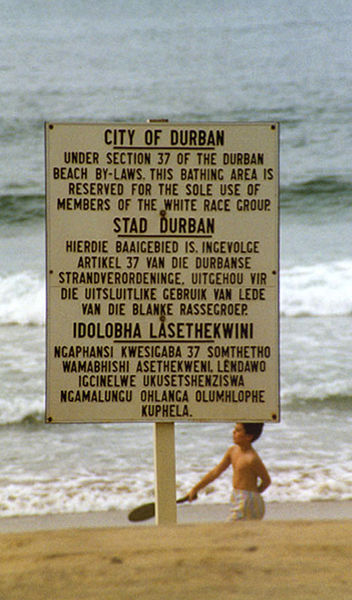
It was at this time that Blacks began to be required to carry a pass, which indicated their identity and place of residence. All black people had to carry this pass at all times. After 1954, with Malan's successors, the measures put in place went even further in dividing groups.
The Bantustans were divided into autonomous regions. Each region was occupied by a different social and linguistic group. These regions, inhabited by black people, were in fact territories too poor to provide for the needs of the inhabitants. However, the people had a right to territory, the right to manage their own affairs, and linguistic and cultural rights. All these territories offered to the African communities represented no more than 13% of the total territory. The intended purpose of this measure was above all to confine the blacks to the small territories and create rivalries between them. This measure guaranteed the whites real political control of the country.
All the measures put in place by the Afrikaans people since their election in 1948 gave rise to a strong hatred of the Afrikaans language. For the blacks, this language now represented the language of the oppressor. This is why many of them turned to English, which was seen as the language of liberation. Meanwhile, African languages were only used in informal daily life or in community activities. These languages were absent from schools, newspapers and social and political life.
In 1961, South Africa became the Republic of South Africa. It was at this point that the United Nations began to sanction the country and officially condemn apartheid.
In 1953, the Bantu Education Act established educational standards. Educational institutions were segregated according to racial groups. Schools reserved for Blacks and Métis trained people for the unskilled labour market. Bantu schools were used to train boys in agriculture and girls in sewing and knitting. These measures prevented Africans from receiving an education that would enable them to aspire to important positions. Control would remain in white hands.
Parents were all the more insulted by this law when, in 1956, all young blacks were obliged to attend Bantu schools. In the schools for whites, the programmes developed aimed to ensure the domination of Afrikaans and to replace English.
Anglophones and Afrikaners fought for their language to dominate South Africa. Whether it was decisions on education or the language used for administration, the two groups did not get along. The English-speaking elite opposed measures to impose Afrikaans on blacks. In their view, this system was only intended to divide the population in order to rule better. True education, for the Anglophones, had to be in English. During these linguistic debates, African languages were neglected by the leaders. Some language committees were set up to introduce them to the various communities, but these languages were defined as languages of the past.
Several political movements attempted to fight apartheid. As the political parties became more radical, police repression increased.
In March 1960, a number of black people campaigned against the pass. The police crackdown that followed left 79 people dead and 178 injured. Several of them were shot while their backs were to the police.
Nelson Mandela then decided to form an armed group,Umkhonto We Siswe. Unfortunately, he was arrested, tried and sentenced to life imprisonment. Following this defeat, several leaders of the anti-apartheid movement left South Africa.
The protest movements in South Africa were born at the same time as the condemnations from the international community. The United Nations boycotted South Africa in 1980. In 1975, Angola and Mozambique, with the help of the Soviet Union, organised training camps on their territory to help South Africans put an end to this regime.
Meanwhile, apartheid laws were not being relaxed. In 1975, the government announced that it was imposing Afrikaans and English as the languages of instruction for all black pupils. Several riots, some of them bloody, took place throughout the territory. Little by little, all the black political organisations wanted to achieve the same goal. Abandoning efforts to promote African languages, the protest movements all wanted to put an end to oppression and inequality.
Several students reacted strongly to the announcement of the new education laws. In Soweto, the black ghetto of Johannesburg, several students demonstrated on 27 August 1976. The leaders' instructions were to re-establish order at all costs and by whatever means necessary. Police repression resulted in 23 deaths and over 200 injuries.
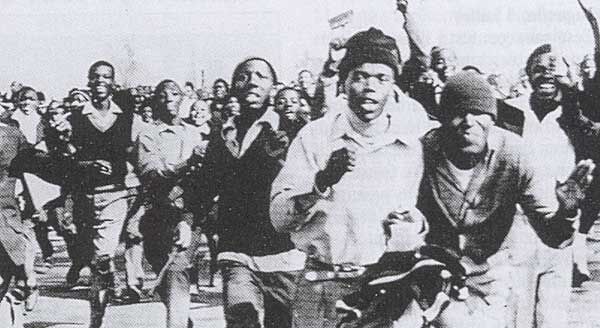
Following this riot, the protest movement spread throughout the country, each time provoking reactions from police officers trying to restore order.
President Botha had no choice but to soften his measures. In 1977, he initiated a policy of openness by softening the laws in relation to the Métis and Indians. However, this announcement caused protests and riots in the Black getthos, for whom these changes did not bode well. In 1984, several demonstrations took place against Botha's government. Botha no longer had a choice: he had abolished elements of segregation, eliminating the pass and allowing mixed marriages.
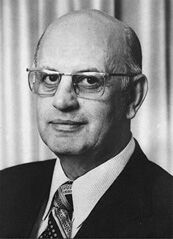
On the other hand, the parties opposing Botha demanded nothing less than a multiracial and democratic society. The situation changed considerably in 1990, when anti-apartheid organisations were authorised. The African National Congress renounced armed struggle. It was also at this time that Nelson Mandela was released. In 1991, the 1953 Education Act was officially abolished. Putting an end to the apartheid regime took 4 years of negotiations during which Nelson Mandela and President Klerk decided on the terms of the new society.
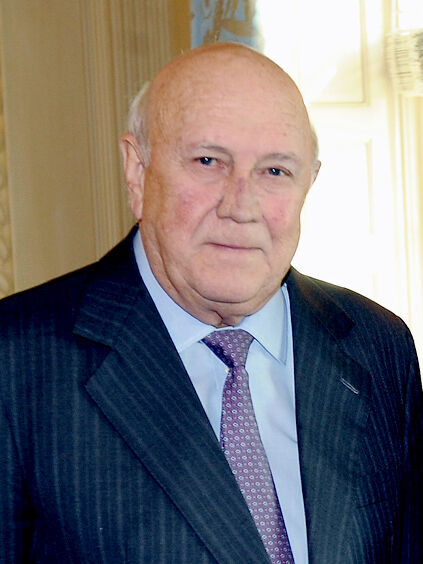
In 1993, an agreement between the two led to the official establishment of a multiracial country. In 1994, in the first multiracial elections, Nelson Mandela won with 62.65% of the vote. He became South Africa's first black president. During his years as president, he took a number of measures to protect South Africa's specific races and cultures. Since 1995, the country has promoted and protected eleven official languages.
South Africa is currently a federation made up of 9 provinces with a number of specific powers. All languages are treated equally and all administrative documents are written in at least two of the official languages. Today, many inequalities still exist and racial tensions have not disappeared overnight.
As South Africa's largest city, Johannesburg is now a major metropolis that has to deal with the problems of today's big cities.
Located near a mining strip, Johannesburg was home to almost 4 million people in 2007. Its economic activities are based on gold mining, industry and the major financial centre. Johannesburg is the economic heart of southern Africa. Urban growth began after the Second World War. The apartheid regime organised urbanisation in a very orderly fashion in the 1960s. All the mixed neighbourhoods were destroyed in the 50s when the black population was forcibly moved to the outskirts. Today, as well as having to manage the city and the shanty towns, the city's leaders now have to densify the city by ensuring a better racial mix.
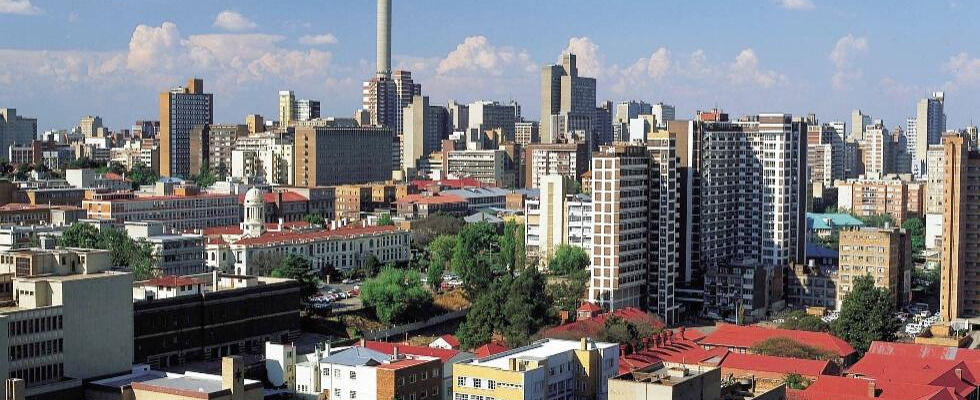
Nelson Mandela was born in 1918. He was expelled from school after taking part in a student demonstration. He nevertheless completed his studies in 1942, obtaining a law degree. In 1944, he began his political career by joining the ANC (African National Congress). Within this party, he resisted the government's racist policies. In 1956, he was arrested for treason, but acquitted in 1961.
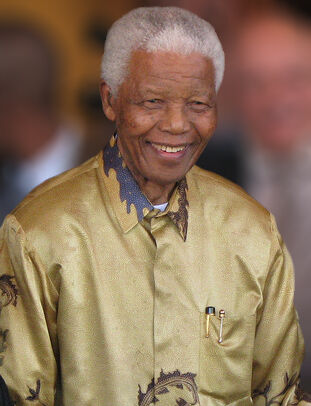
However, after the Shaperville massacre in 1960, the ANC was banned by the government. Mandela then abandoned his ideas of non-violence. He then founded an armed association, Umkhonto We Sizwe. However, he was arrested again in 1962, after which he was sentenced to 5 years in prison. Charged with sabotage, treason and conspiracy in 1963, his sentence became a life sentence. He was not released until 1990, when the apartheid regime was less radical.
In 1991, he was elected president of the ANC. It was thanks to this election that he was able to negotiate the end of apartheid with President Klerk. The two men were awarded the Nobel Peace Prize in 1993 for their joint efforts to end apartheid. Elected in the first multiracial elections in 1994, Nelson Mandela was President of South Africa until 1999. He died on 5 December 2013 at the age of 95.
Born in 1953, Johnny Clegg grew up in Johannesburg, at the very heart of apartheid. A singer and guitarist, he learned African music and languages despite the political conditions of the time.
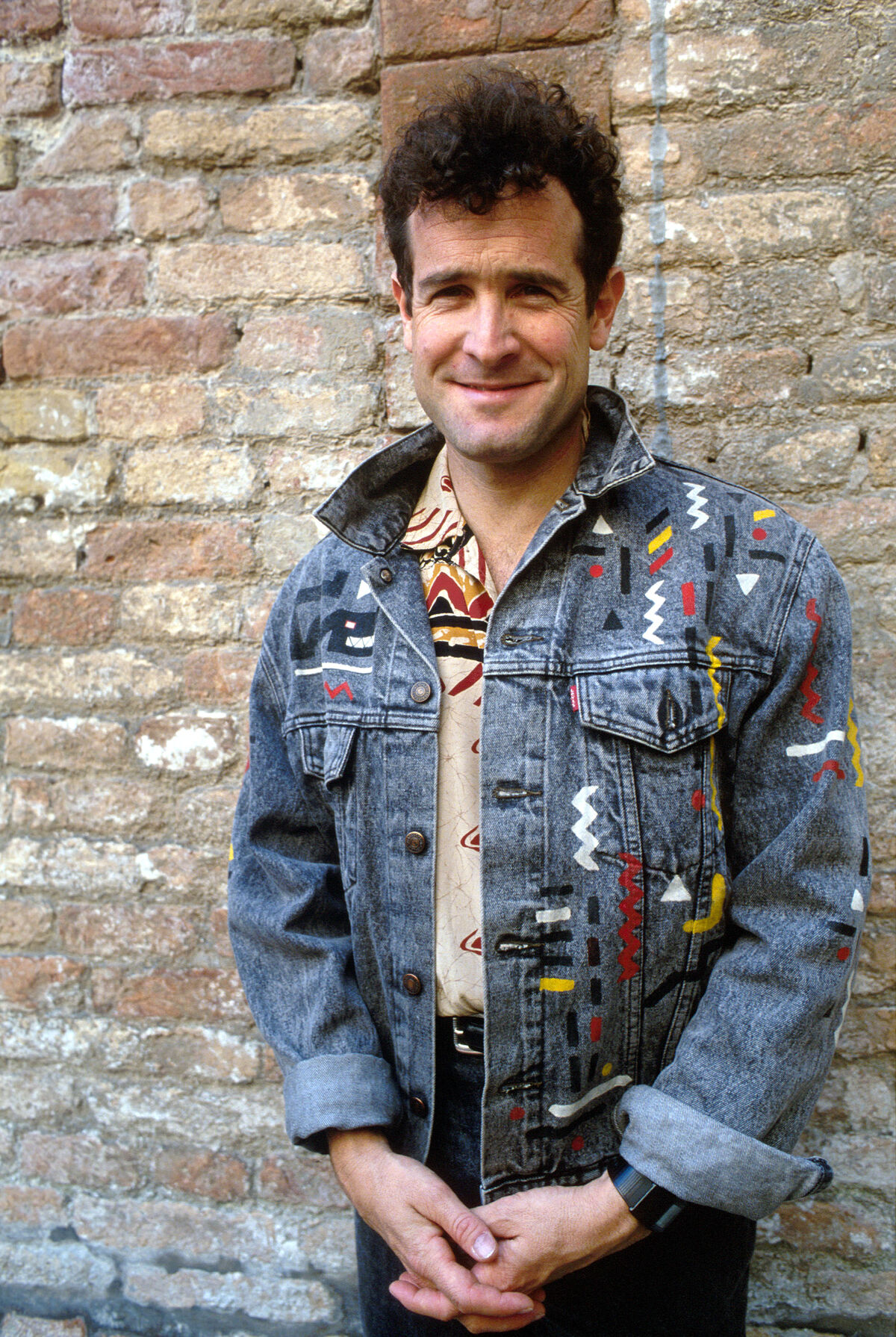
In the town, he is known as the White Zulu. One day, he met Sipho Mchunu. Sipho Mchunu was a Zulu who had left his homeland to pursue a career in Johannesburg. He had heard of a white man who played Zulu music. The two men met and formed a duo that produced several albums. Johnny Clegg's last album came out in 2006. The music he creates is a judicious blend of pop, rock, funk, reggae and traditional African music. His shows and videos are often punctuated by choreography and tribal dance.
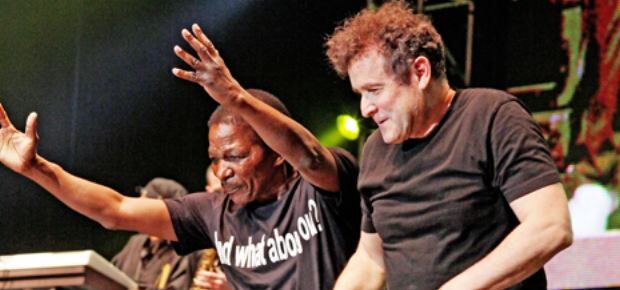
Johnny Clegg succeeded in mixing traditions, languages and cultures in a political regime that forbade such encounters.
